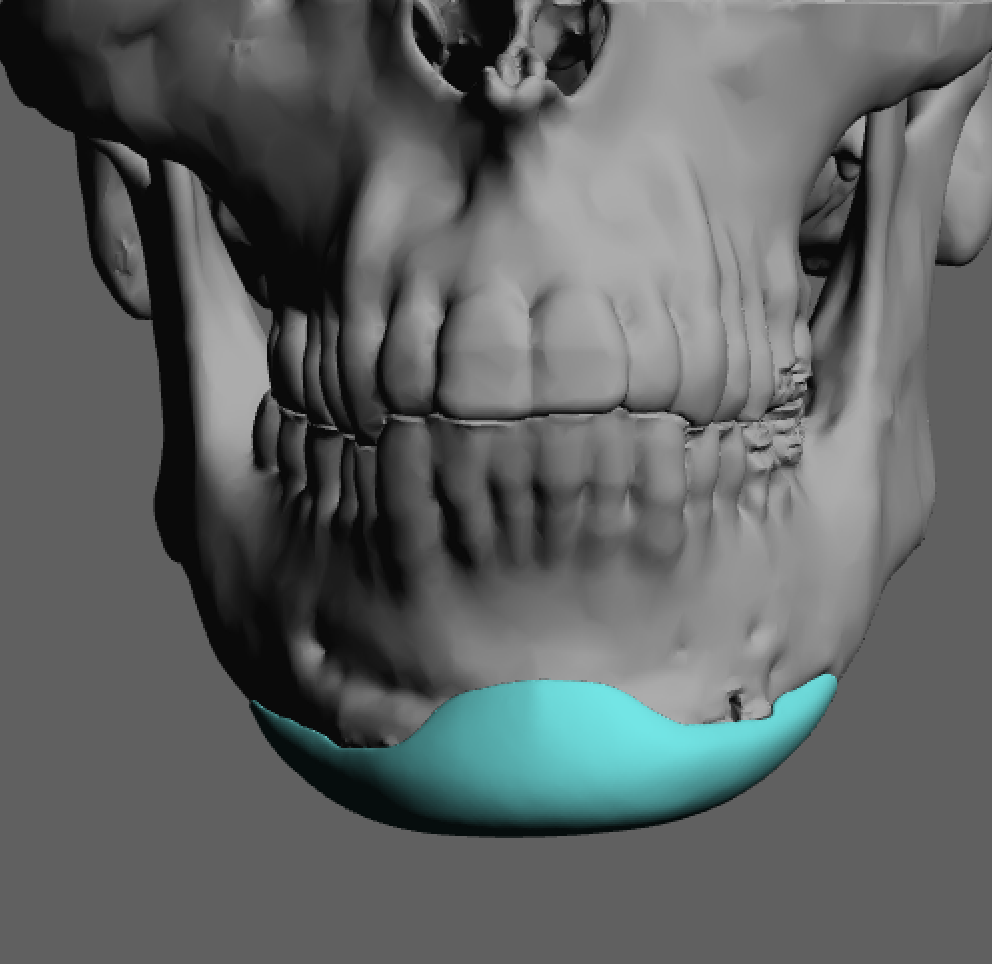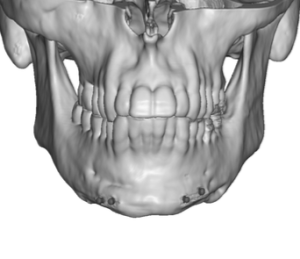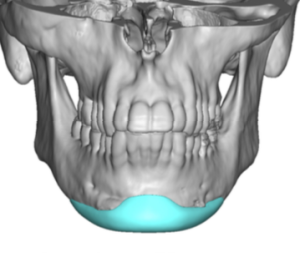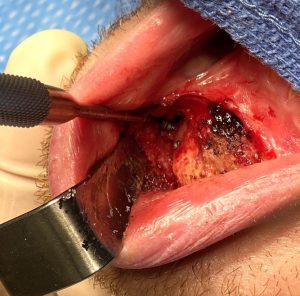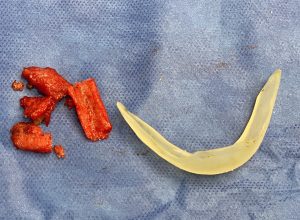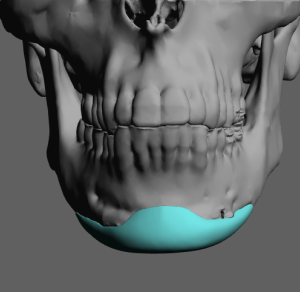Background: While the sliding genioplasty can produce a variety of bone movements, its most common dimensional change is horizontal advancement. While the benefits of horizontal bone advancement are seen in the front end of the chin, there are potential liabilities at its back end. As the chin bone is advanced, depending on how much it is moved forward as well as the angulation of the bone cut, a contour deformity can occur at the end of the osteotomy line along the inferior border of the jawline. Known as a notch or step off the smooth inferolateral border of the jawline can develop a contour deficiency seen on the outside as an indentation at the side of the chin.
Stepoff deformities from a sliding genioplasty can be treated by an implant placed over them. Regardless of the implant material it needs to be thin and have fine edging so as to not create another type of palpable or visible edging. The other implant feature that is important is ease of reversibility. Should the implant not be placed ideally or inadequately solves the problem, removing it should not pose another issue.
Case Study: This male had a prior history of a sliding genioplasty which had good projection but bothersome stepoffs at the sides of the chin. They were secondarily treated by the intraoral placement of onlay Medpor implants with screw fixation. Unfortunately their thickness were equally bothersome as the bone defects and he wanted them removed and replaced with a new custom chin implant that adequately and smoothly cover the bone defects.
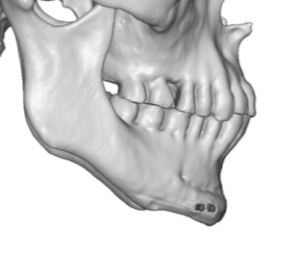
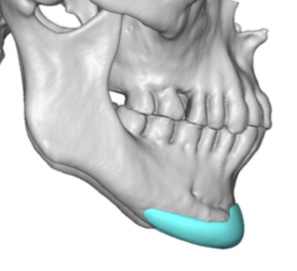
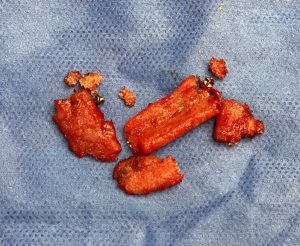
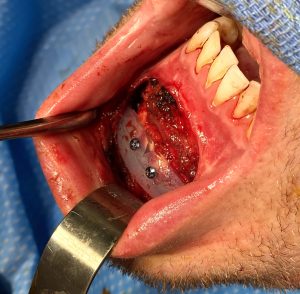
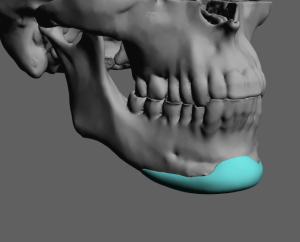
Case Highlights:
1) The sliding genioplasty can result in a more narrow chin that some males may dislike.
2) Secondary implant coverage of a lateral sliding genioplasty defect needs to be feather edged to not create a different type of contour deformity.
3) To optimize implant placement and feather edging for jawline contour deformities a custom implant approach is most ideal.
Dr. Barry Eppley
Indianapolis, Indiana

